Artificial Intelligence (AI) tools can create content quickly, but they still need human creativity for emotion, culture, and originality, and APU students learned that AI is best used as a helper, not a replacement, with the future focused on collaboration — humans and AI working side by side.
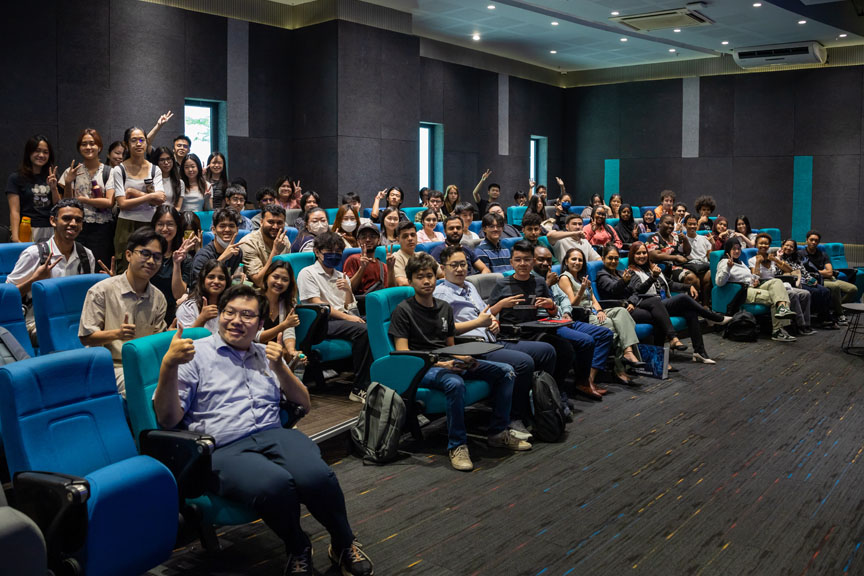
On 15th May 2025, the Asia Pacific University of Technology & Innovation’s (APU) School of Marketing & Management (SoMM) hosted an engaging and thought-provoking session titled “AI vs Human Creativity: Who Wins the Social Media Game?”
In an era where artificial intelligence (AI) is becoming increasingly entwined with everyday life, especially on digital platforms, this event explored a timely and fascinating question: Can AI truly match the creativity of the human mind?
The session drew a lively crowd of over 100 participants from the School of Business (SoB), School of Foundation (SoF), School of Computing (SoC), and SoMM.
Leading the session was Ms Manisha Pasricha, a renowned Social Media Strategist and Corporate Trainer, whose insights offered students a fresh lens through which to explore the fast-evolving role of AI in content creation.
Ms Manisha began by breaking down the capabilities of popular AI tools like ChatGPT, Canva AI, Jasper, Midjourney, Adobe Firefly, and Runway ML.
While she acknowledged their efficiency and speed, she stressed an important truth: AI lacks emotional intelligence, cultural nuance, and the spark of originality that comes from lived experience.
“AI can draft,” she said, “but humans define.” Her message was clear — AI is not a rival, but a creative collaborator. Rather than replacing the human touch, it should be used to enhance it.
Students actively engaged with the topic, raising thoughtful questions, and contributing to spirited discussions.
Their curiosity transformed the session into a lively exploration of both the promises and pitfalls of AI.
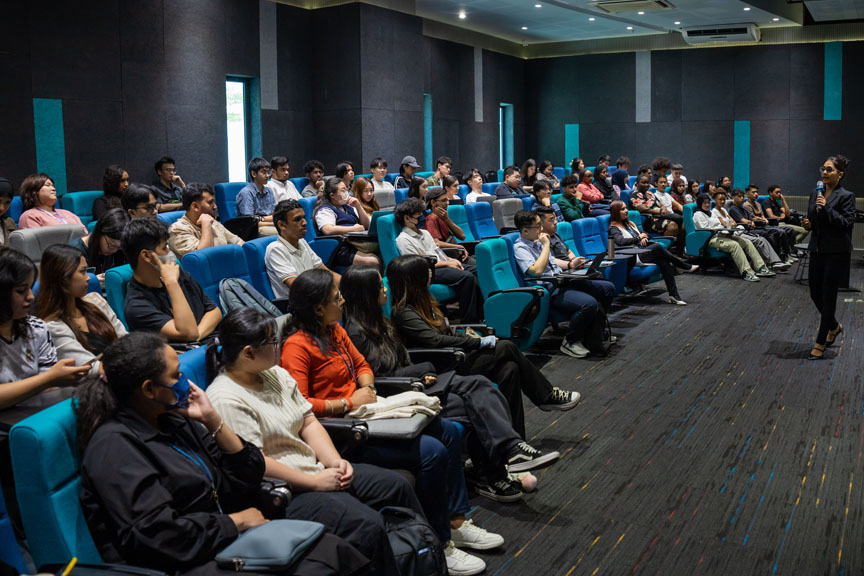
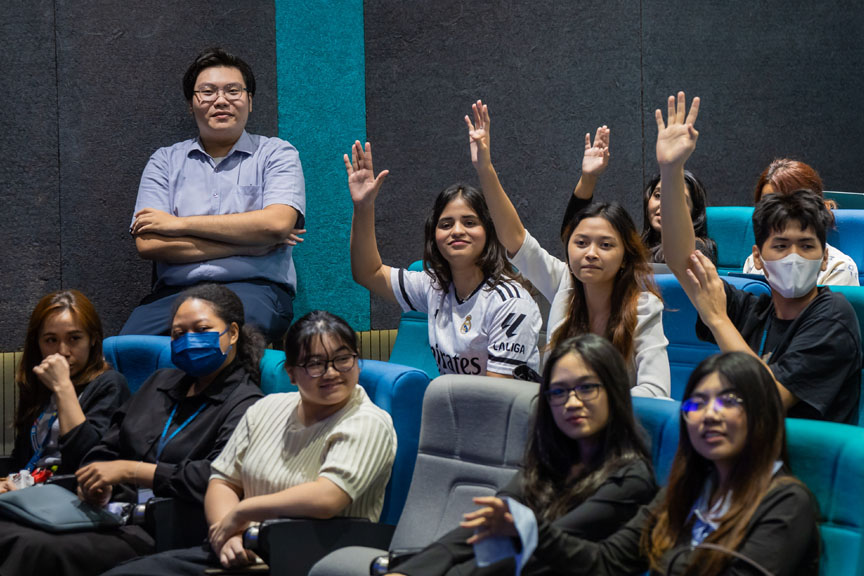
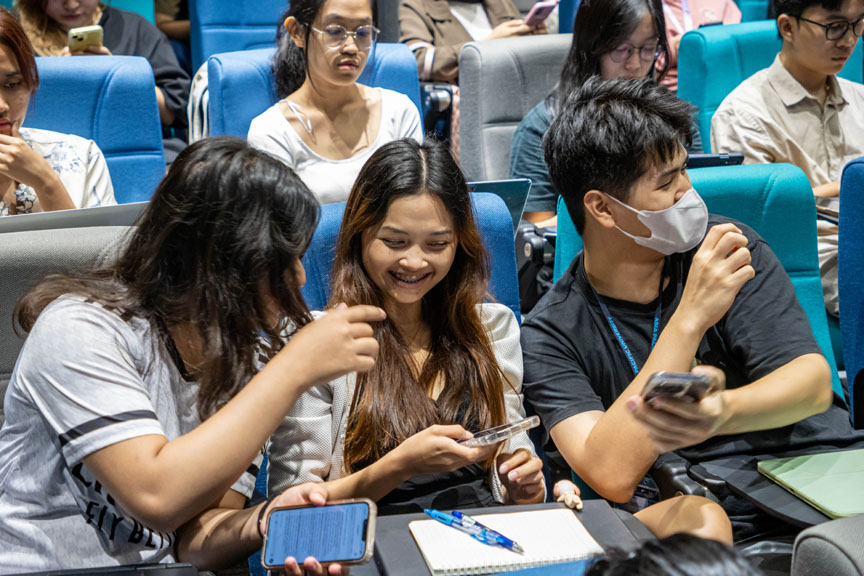
However, students also recognised that while AI can handle the ‘what’ and ‘how’, it struggles with the ‘why’.
Elements like humour, sarcasm, emotional storytelling, and cultural context still lie firmly in the human domain.
“AI can remix, but only humans can imagine and invent,” Manisha explained.
The students walked away with a nuanced understanding of how AI and human creativity each play unique roles in content creation: AI excels at automating repetitive tasks, working round the clock, learning from feedback, and scaling content production, while on the other hand, humans truly shine when it comes to emotional resonance, understanding trends and memes, using local slang, and embracing the imperfections that make content relatable.
The future is collaborative
Students were encouraged to embrace tools like Canva Magic Write, Copy.ai, and GrammarlyGO, which were highlighted as examples where collaboration can thrive; with these, AI handle’s structure and grammar, while humans finesse tone and personalisation.
The session also tackled the ethical implications of AI: the risks of deepfakes, generic content, plagiarism, and declining originality.
Manisha urged students to use AI responsibly and critically, underscoring the need for ethical awareness in the digital age.
“AI is a mirror — it reflects what it is been fed. But humans, we are a canvas. We create from the unknown,” she said, to resounding applause.

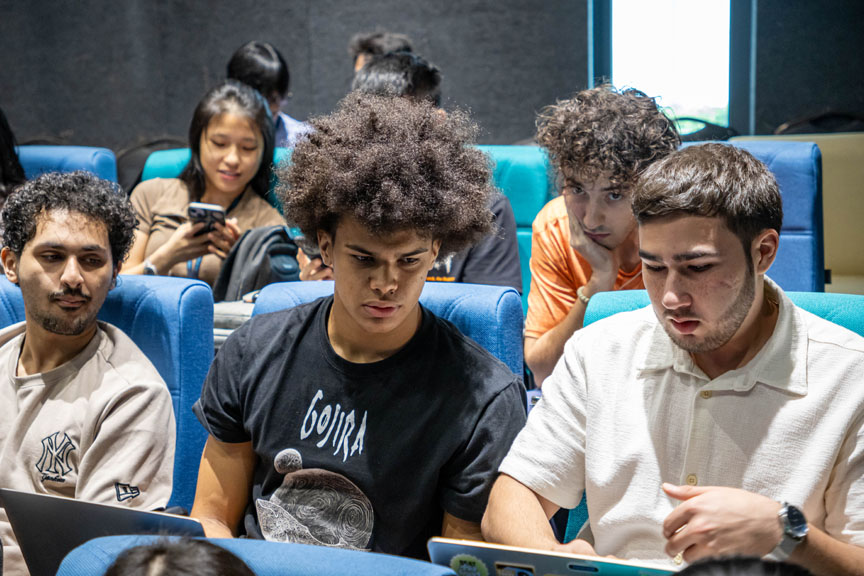
Teng Chun Hong, a Digital Marketing student, appreciated the balance proposed.
“She (Ms Manisha) suggested a 75:25 split — 75% human effort and 25% AI support. That really stuck with me. AI cannot fully grasp our local humour or culture. Real creativity needs a human soul.”
Prasham Reiyn Karunanithi, studying International Business Management, reflected on the limitations of AI tools they use daily.
“It reminded us not to over-rely on AI. It is helpful, but not always accurate or complete. We need to keep thinking for ourselves.”
Nelson David Rijkaard, also from International Business Management, saw AI as an amplifier of human talent.
“AI helps, but we guide it. Without human judgement, content loses meaning.”
Chan How Wen, a Software Engineering concluded that “AI is like an intern. It drafts quickly, but we finish the job with context, heart, and creativity. That idea really changed how I see its role.”
In the closing remarks, Associate Professor Dr Devinder Kaur, Head of SoMM, highlighted that workshop like these are vital to assist students realise that, while AI is appropriate for today’s fast-paced and multitasking-driven world, it does have limitations.
“AI may assist in swiftly brainstorming many inventive solutions or providing different viewpoints that might not come to a person alone.
“Students must continually focus on developing their critical thinking and creativity,” she explained.
Ms Harjinder Kaur, APU Senior Lecturer and Industry Advisory Panel Coordinator added, emphasised the broader vision behind the event.
“Sessions like these bridge classrooms learning with real-world relevance. They spark curiosity, deepen critical thinking, and prepare students for the future — where creativity and technology must dance in harmony.”
It is not about choosing between AI and human creativity, but rather about mastering the art of collaboration, where AI supports, and humanity leads.
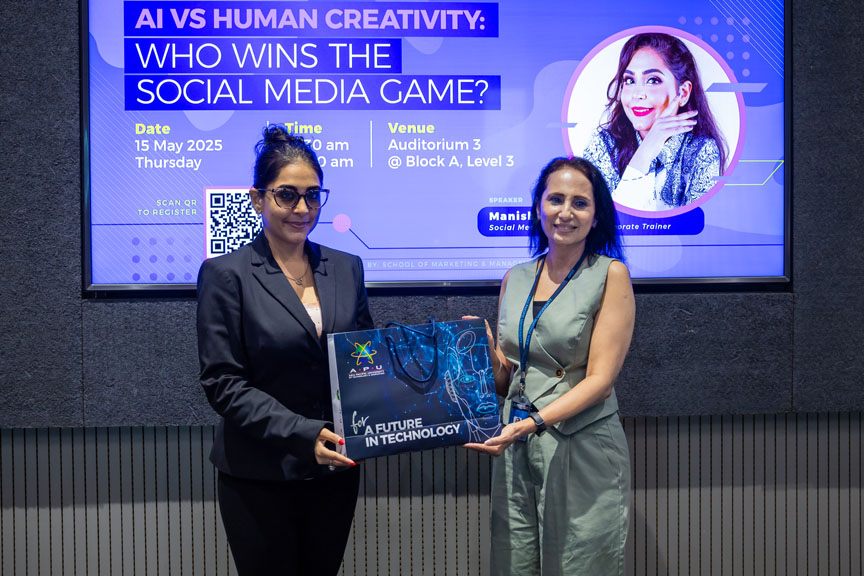
News & Happening
Download e-Brochures
Intake Calendar
Want to know more ?
Let’s Connect